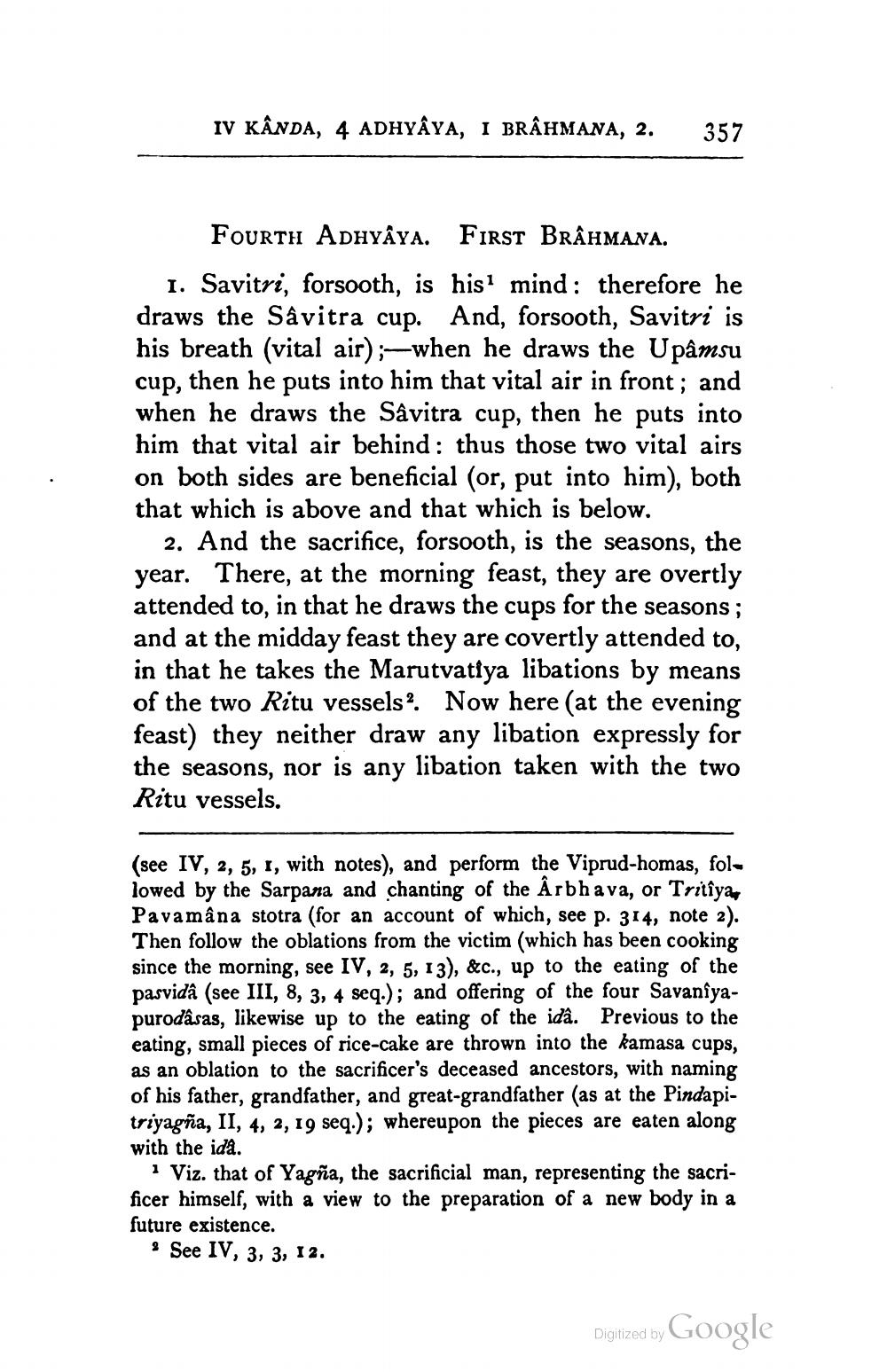________________
IV KÂNDA, 4 ADHYAYA, I BRÂHMANA, 2.
357
Fourth AdhyÂYA. First BRÂHMANA. I. Savitri, forsooth, is his mind: therefore he draws the Savitra cup. And, forsooth, Savitri is his breath (vital air);-when he draws the Upâmsu cup, then he puts into him that vital air in front; and when he draws the Savitra cup, then he puts into him that vital air behind: thus those two vital airs on both sides are beneficial (or, put into him), both that which is above and that which is below.
2. And the sacrifice, forsooth, is the seasons, the year. There, at the morning feast, they are overtly attended to, in that he draws the cups for the seasons; and at the midday feast they are covertly attended to, in that he takes the Marutvatiya libations by means of the two Ritu vessels?. Now here (at the evening feast) they neither draw any libation expressly for the seasons, nor is any libation taken with the two Ritu vessels.
(see IV, 2, 5, 1, with notes), and perform the Viprud-homas, followed by the Sarpana and chanting of the Arbhava, or Tritîyar Pavamâna stotra (for an account of which, see p. 314, note 2). Then follow the oblations from the victim (which has been cooking since the morning, see IV, 2, 5, 13), &c., up to the eating of the pasvida (see III, 8, 3, 4 seq.); and offering of the four Savaniyapurodāsas, likewise up to the eating of the idâ. Previous to the eating, small pieces of rice-cake are thrown into the kamasa cups, as an oblation to the sacrificer's deceased ancestors, with naming of his father, grandfather, and great-grandfather (as at the Pindapitriyagña, II, 4, 2, 19 seq.); whereupon the pieces are eaten along with the idå.
1 Viz. that of Yagña, the sacrificial man, representing the sacrificer himself, with a view to the preparation of a new body in a future existence.
See IV, 3, 3, 12.
Digitized by Google




